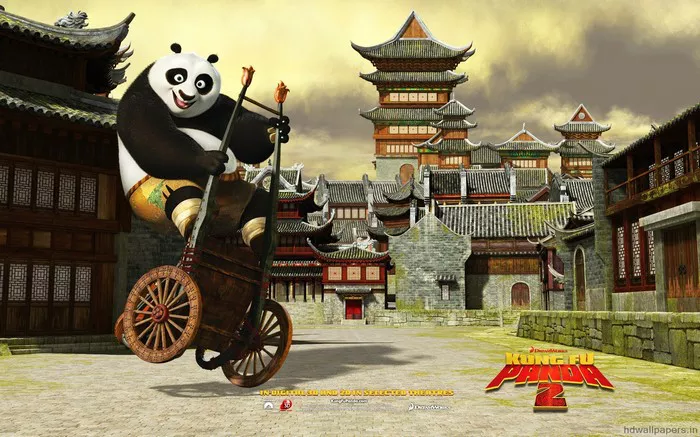Kung Fu Panda, a significant cultural phenomenon, has captured the hearts of audiences around the world with its inspiring story, memorable characters, and stunning animation. Created by DreamWorks Animation, Kung Fu Panda is not just a successful film franchise but has also extended its reach into various forms of media including a compelling animated series. This article explores the evolution of Kung Fu Panda, with a focus on its transition from the big screen to a serialized television format, its impact on viewers of all ages, and the thematic continuity across its various installments.
The Birth of a Panda Hero
Kung Fu Panda debuted in 2008 as a feature film. It introduced audiences to Po, a clumsy yet spirited panda who dreams of becoming a kung fu master. The film blends traditional Chinese culture with modern animation, creating a unique and captivating story. The success of the first movie led to sequels and further developments, including Kung Fu Panda 2 in 2011 and Kung Fu Panda 3 in 2016. These films expanded on Po’s journey, exploring his background and the depths of the kung fu world.
Expanding the Panda Universe: The Animated Series
The popularity of the Kung Fu Panda films inevitably led to expansion into television. DreamWorks Animation, recognizing the potential for deeper storytelling and character development, launched several TV series to bring more of Po’s world to fans around the globe.
Kung Fu Panda: Legends of Awesomeness
Premiering in 2011 on Nickelodeon, “Kung Fu Panda: Legends of Awesomeness” continued the adventures of Po, who balances his responsibilities as the Dragon Warrior with his duties at the Jade Palace. The series features many of the beloved characters from the films and introduces new ones, enriching the lore of the Kung Fu Panda universe. Over three seasons and 80 episodes, the series explores themes of friendship, duty, and personal growth, all while providing the humor and action that fans of the films would expect.
Kung Fu Panda: The Paws of Destiny
In 2018, DreamWorks Animation released “Kung Fu Panda: The Paws of Destiny” on Amazon Prime. This series introduced a new storyline featuring four young panda children who stumble upon a mystical cave beneath Panda Village. They absorb the chi of ancient and powerful kung fu warriors known as the Four Constellations and must realize their destiny to save the world from evil forces. Po finds himself as a teacher to this new generation, embodying the role of mentor that Master Shifu once played for him.
Critical Reception and Cultural Impact
The transition of Kung Fu Panda from film to television was met with positive feedback. The series retained the core essence of the movies—humor mixed with heart and action-packed sequences. Both TV series have been praised for their ability to maintain the quality of storytelling and animation expected from DreamWorks, making them a hit among both children and adults.
The franchise’s cultural impact is significant, promoting positive messages about self-acceptance, perseverance, and the importance of community. Po’s journey from an underdog to a hero is a universal theme that resonates across different cultures, making Kung Fu Panda a globally recognized and beloved franchise.
Educational and Developmental Aspects
Beyond entertainment, the Kung Fu Panda series offers educational values. It introduces younger audiences to elements of Chinese culture, philosophy, and the martial arts tradition. Themes such as respect for elders and peers, the importance of inner peace, and the pursuit of personal betterment are woven throughout the episodes, providing viewers with more than just a superficial narrative experience.
Future Prospects
The continuing popularity of Kung Fu Panda suggests that the franchise has a lasting appeal. Discussions of additional sequels and spin-offs are indicative of its potential for further expansion. As technology and animation techniques evolve, future installments could offer even more immersive experiences, potentially incorporating virtual reality or interactive elements.
Conclusion
Kung Fu Panda has transcended its origins as a film series to become a robust narrative universe, encompassing multiple TV series and captivating a global audience. The franchise’s ability to blend comedy, action, and heartfelt storytelling with educational undertones allows it to occupy a special place in the hearts of viewers young and old. Whether on the big screen or through episodic adventures, Kung Fu Panda continues to teach and inspire, proving that the spirit of Po and the essence of kung fu are timeless.

